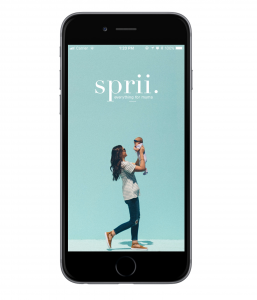If 2017 was the year Dubai embraced the notion of eCommerce in its entirety, then 2018 is set to be dominated by the rise of mobile Commerce. After all, penetration rates are higher in Dubai than almost anywhere else in the world; our smartphones are our lifeline to connect, to shop, to plan. What better way for retailers to reach their consumer than with a smart shopping experience that engages and converts without being overtly sales led?
Other markets are well versed on harnessing this form of commerce. Figures from IMRG and Capgemini released last year confirm that mCommerce is increasing at a rapid rate in the UK, with 51% of online retail sales coming via mobile during the latter part of 2015 to January 2016.
 The U.S. too boasts impressive figures. In 2014, according to data from the U.S. Census Bureau and comScore, mobile transactions made up 11.6% of the $303bn U.S. eCommerce total.
The U.S. too boasts impressive figures. In 2014, according to data from the U.S. Census Bureau and comScore, mobile transactions made up 11.6% of the $303bn U.S. eCommerce total.
BI Intelligence used the above data to forecast future growth, pegging it at a staggering 45% of the total U.S. eCommerce market by 2020.
Growth in this area has been swift in the Western world, but its not without its issues. Low consumer confidence with mobile payments and a frustrating interface experience has perhaps slowed its acceleration.
The potential for mCommerce in Dubai is huge for 2018 and beyond. It will continue to evolve with other market developments, our own consumer habits, and advancements in technology.
Businesses face a challenge in ensuring consumers have a seamless experience, whatever platform they choose to shop on, and acknowledging issues faced in other markets. Desktop, mobile web, and apps all need to be optimised for easy navigation and use.
The minute one of these platforms is unresponsive, you have lost your user. The window is only two seconds to get it right, so its imperative as an online business to not rush any decisions just because competitors have jumped on the bandwagon, or indeed the trend has emerged.
Think Like the Consumer
 Its very easy to simply take a desktop site and migrate it to mobile, but the way we respond (to the mobile site) is completely different. Our expectation about how to navigate changes, and aligning the UX and UI is key to a smooth transition. Put yourself in your users shoes what do you want from the experience, how do you want to use the platform; its a real eye opener.
Its very easy to simply take a desktop site and migrate it to mobile, but the way we respond (to the mobile site) is completely different. Our expectation about how to navigate changes, and aligning the UX and UI is key to a smooth transition. Put yourself in your users shoes what do you want from the experience, how do you want to use the platform; its a real eye opener.
Data Driven Targeting
Theres nothing worse than blanketed communications that lack the personal touch, which is where specific targeting comes into play. Businesses need to be prepared to spend time getting to know their core consumer and anticipating their needs to engage first and convert later.
Smarter Shopping
Consumers are demanding more and more from their experiences online, so there is a real opportunity to capitalise on this. Create an efficient checkout process, pre-populate data fields, produce an easy to navigate search tool, and you have the basis for repeat, and crucially, loyal customers.
—
A true entrepreneur is a doer, not a dreamer. Sprii chief Sarah Jones is living proof of this. Bitten by the bug at just 14, Sarah set up a profitable eBay business importing items from across the globe and selling in the UK, igniting a love for eCommerce and developing an acute business mind in the process.

Four years later, a degree in Economics at Edinburgh University beckoned, which not only heightened Sarahs financial acumen, but also her highly competitive nature. Her placement at Deloitte London in the retail M&A team led to an international secondment in the Middle East just a few years later.
Spotting a gap in the eCommerce market on arrival, Sarah quickly secured funding to make her idea a reality and Sprii was born.
Spriis operating model is 100% dropship, working with authentic distributors, and shipping products directly to the end consumer via third party logistics partners. The technology is custom built, in-house, and provides automated inventory management, a seamless ordering process for customers, and quick delivery regionally.
Website: www.sprii.com

